Sam's Salon: Death and the Spirit World in Guatemala 🇬🇹
a slightly macabre edition for Spooktober and Día de los Muertos 👻
Welcome to my salon, where I bring the world into your home through a themed menu, book/movie recommendations, and ideas to spark conversation, all inspired by a given place. The only house rules are 1) come hungry and 2) share your thoughts openly and civilly in the comments. Step inside, and let’s travel from home together!
Hi, friends! Last month, our salon took us to Greece, where we munched on tasty orzo and chatted about Stoic philosophy. Click here if you missed it. Before we dive into this month’s virtual travels, a couple quick housekeeping notes—
I’m offering 25% off paid subscriptions through the end of the October—click here to subscribe for $6/month! As a free subscriber, you’ll get one of these salon dinner posts per month. Paid subscribers are invited to stay for dessert, where I’ll give you a sweet treat to make, a themed playlist, and a fresh conversation topic.
The subscriber chat is on! This is a conversation space in the Substack app that I set up exclusively for my subscribers. For each month’s salon, I’ll open a thread we can use like a live hangout. I’ll also use chats to preview some of the books, movies, and topics for upcoming salon dinners. The best way to join the chat is in the Substack app, but if you read Substack in your browser, you can find chats in the sidebar to the left of your inbox. Chats are sent via the app, not email, so turn on push notifications so you don’t miss conversation as it happens!
Now we journey to Guatemala, and our topic is à propos for Halloween month: we’re talking about our relationship with death and the spirits of our dear departed.
“Would you ever want to be visited by the spirit of a dead loved one?” Luis, my sister-in-law’s husband, asked me recently. We were walking through Flores—a small island city on the outskirts of Guatemala’s Petén forest—where one sees spirits as a matter of course, because the Maya that live there believe in them deeply.
I gathered that Luis was asking about a very specific spirit. I had lost my father the year before, and I was at the stage in my grief where it was easier to forget I ever had a father than it was to remember what I’d lost. To move on, I needed to draw hard lines; to say that was then, this is now; to leave my father in the land of the dead while anchoring myself in the land of the living.
“No,” I answered, after a pregnant silence. “I hope my dead loved ones have left this world entirely. I hope they are in a better place than this.”
I have never seen a spirit, and I am not sure I believe in them at all. Earlier that same day, while we sipped the sweet and savory water from whole coconuts, my sister-in-law, Philippa, had confessed that she never believed, either—until she moved to Guatemala. She had since seen several ghosts herself. There was her recently deceased cat, who came in through an open window just to say hello, and a blue-green specter in tattered clothes—like Jacob Marley from A Christmas Carol—who stood in her doorway and stared at her. A neighbor had been digging a well at the time, and Philippa thought they dug too far down, getting too close to the Mayan spirit world and unleashing the phantoms. When dirt chanced to fall into the hole, the visitations stopped.
This sounded frightening and outlandish to me, but there was a logic to it. The Maya believe that caves and deep water sources—like wells, perhaps—are portals to the underworld, and that through such gateways, mortals and spirits can cross into each others’ realms. Moreover, it is normal in Guatemala to have an ongoing relationship with deceased ancestors, and it is accepted that they intervene in earthly affairs. To Philippa, these paranormal encounters were neutral experiences—just something that happens to people, and a reminder that life is transient.
So, reader, do you believe in spirits? What is your relationship with death and mortality—both your own and that of your loved ones—and how do we get closure after loss? In this month’s salon, we’ll discuss how these ideas have become particularly complicated in Guatemala, where a 36-year civil war left some 200,000 dead and an entire country seeking justice.
but first, sustenance!

Appetizer: black bean soup. Black beans are served in some form at nearly every meal in Guatemala. This soup is a simple, delicious comfort food, but really, it’s a vehicle for the toppings. I recommend cilantro, crema, and avocado.
Main: chiles rellenos and rice. This version of the Central American classic from Guatemalan blogger Paula Bendfeldt-Diaz is battered and fried, and can be stuffed however your heart desires. It’s somewhat fussy to make if you, like me, have a lax attitude toward mis-en-place and instead just flail around the kitchen as you go, but the result is so, so good. (Note: I wanted to feature pepián, a spicy soup perfect for when the air gets a chill, but pepián doesn’t have a real recipe—it’s a traditional dish with countless variations that are passed on orally rather than written down—and people say it only tastes right when cooked by a Mayan woman. That may be true, because I tried this recipe and it tasted like absolute garbage! 0/10.)
Sides: corn tortillas. According to Mayan legend, the gods created humans from corn. Corn is as plentiful as it is sacred in Guatemala, and you rarely see a table without a pile of steaming hot tortillas. Here is a super simple recipe to make them by hand (this would be a fun weekend project!), or you can throw store-bought tortillas in a pan and serve warm.
Drink pairing: limonada con soda, a fizzy, refreshing mix of lemon or lime juice, sugar, and club soda that I guzzled at every opportunity in Guatemala. You can also make it with Sprite, if that’s what you have on hand.
food for thought
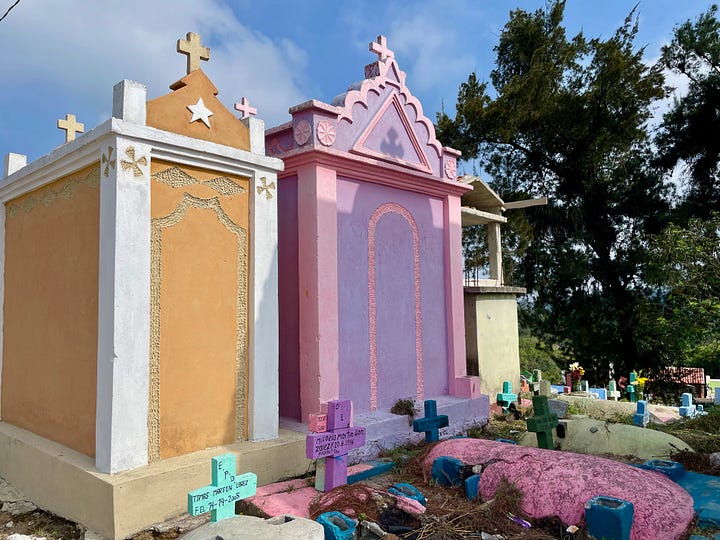
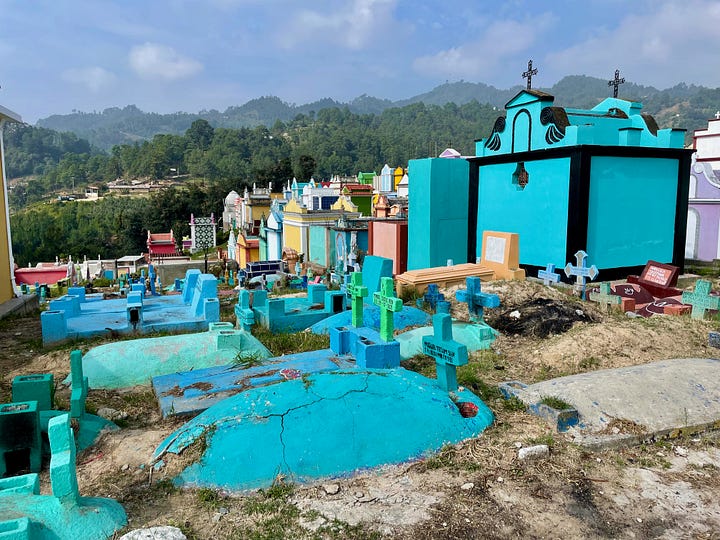
Recall our discussion prompts: do you believe in spirits? What is your relationship with death and mortality, and how do we find closure after loss? In Guatemala, these topics are particularly rich and complicated.
Pictured above is Guatemala’s Chichicastenango cemetery. In contrast with most North American and European burial sites, cemeteries in Guatemala have a tangible energy, like bustling cities unto themselves. The graves are painted in symbolic hues, or in the favorite colors of the deceased. Candles and offerings for the dead burn constantly, the result of a unique alloy of Catholicism and indigenous religions, and a symbol of Guatemalans’ ongoing relationship with those who have gone before them.
Guatemalans commune with the dead year round, but most of all toward the end of October and early November, during Día de los Muertos or Día de Todos los Santos. This is a joyous occasion when the border between worlds is especially porous, allowing the spirits of our loved ones to visit the mortal realm. Many spend the whole day at the cemetery, decorating loved ones’ gravesites, offering meals for the spirits, and celebrating with family well into the evening.
Now, imagine, for those who tend so affectionately to the graves of their departed, what it would be like to not know where loved ones came to rest—to have no site at which to make offerings, nowhere to sit and talk to the spirits. After Guatemala’s civil war, this is the reality for many.
In 1954, the CIA backed a military coup against democratically-elected Jacobo Árbenz, whose land reform policies threatened the interests of the United Fruit Company and were intolerably leftist for the anti-communist U.S. (more readings on this below). Árbenz’s assassination precipitated a decades-long chain of violence largely perpetrated by the Guatemalan military against indigenous peoples, who were labeled enemies of the state for their assumed pro-worker, pro-guerilla sympathies. Entire Maya villages were rounded up, summarily executed, and buried in mass graves.
The war ended in 1996, but survivors continue to struggle with a doubly painful loss: they are not only deprived of their loved ones in life, but also of the ability to communicate with their spirits. National Geographic summarizes it well in a photo essay about Chichicastenango cemetery:
If a body isn’t properly buried, some believe the soul becomes trapped between the realm of the living and dead, and lines of communication are severed. This belief was painfully potent during the 36-year Guatemalan civil war (1960-1996) that claimed upwards of 150,000 lives and whose legacy lingers in the country’s collective memory. During the brief presidency of Ríos Montt—who was later indicted for genocide—the Maya were declared “enemies” of the state and brutally massacred. Many were dumped in mass graves without proper burial—their families left to mourn their disquiet spirits. When these gravesites are discovered, special ceremonies are conducted to properly send them to afterlife.
Simply punishing the perpetrators will not bring back the dead, nor will it let them rest. Only a dignified end—an appropriate send-off from this world to the next—can do that. Justice for these atrocities is necessary, but insufficient.
The New York Times published this moving photo essay about the exhumation and reburying of the murdered in Guatemala, an effort that continues to this day. When mass grave sites are identified, the bereaved perform rituals to send the spirits of their loved ones on, like wrapping them in traditional cloth and leaving porcelain cups for their use in the afterlife. This gives the dead their due, and brings closure to the living.
This month’s readings and films focus on justice and loss in Guatemala. Each, in its own way, gives a voice to the dead—particularly those murdered during the civil war and in the ongoing struggle for reconciliation.
read
Popol Vuh: Read a free PDF here. Popol Vuh is the Quiché Maya’s sacred text, a story of a journey to the underworld. The translator, ethnographer Allen J. Christensen, provides fascinating commentary in the preface. This passage took my breath away:
Many of the larger highland Maya communities possess wooden chests containing books and clothing owned by their ancestors which they revere as precious relics. These objects are said to bear the k'ux, or “heart” of the ancestors. On special occasions, the contents are removed ceremonially to “feed” them with offerings of incense and prayers. Many of these books are of great antiquity […] but no attempt is made to open them or read them. Partly this is because few contemporary Maya know how to read the early script of the colonial period, and partly out of respect for the words themselves. When the words of the ancestors are read, or spoken aloud, it is as if that person had returned from death to speak again. Reading ancient texts is therefore a very delicate matter, filled with peril if the words are not treated with sufficient respect.
The Long Night of White Chickens by Francisco Goldman: This book has mixed reviews—the pace is slow, lingering in small moments and on complicated emotions—but reader, I am engrossed in it. The story follows an American-Guatemalan man who travels back to Guatemala in the 1980s to find the truth behind his adoptive sister’s murder, wondering all the while what might have been had her life not been senselessly cut short. The author masterfully evokes the tense atmosphere of everyday life during the Guatemalan civil war by using it as the story’s backdrop rather than its central conflict. Available for purchase here (only $2.99 on Kindle!).
Bitter Fruit by Steven Schlesinger and Stephen Kinzer: This is the gold standard of non-fiction books on CIA involvement in the Guatemalan civil war. I’m including it because it is important to me to be open about my country’s faults, both out of respect for the dead and to make it less likely we’ll repeat the same mistakes. But there is an even simpler truth beneath the facts of this specific case: cruel people who do great harm to others invariably have enablers and collaborators. Evil cannot exist without help. Available for purchase here.
watch
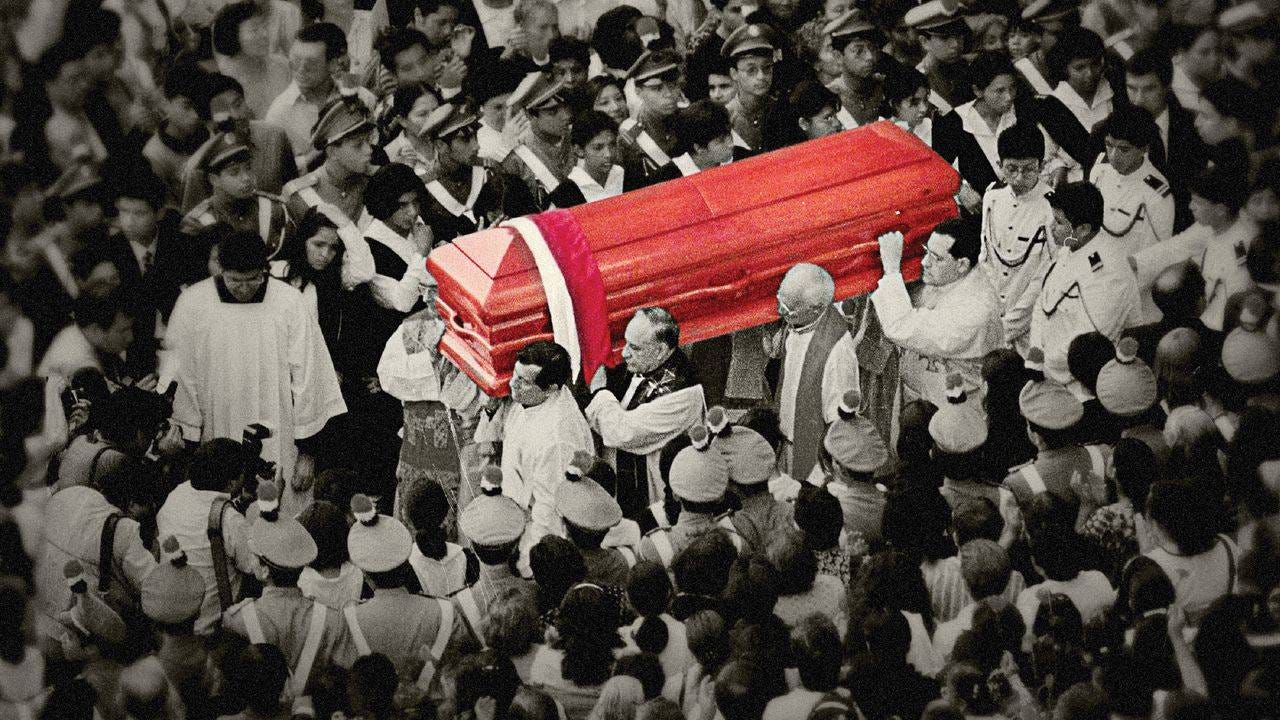
The Art of Political Murder: This riveting whodunnit follows the inquiry into the death of Juan Gerardi, a priest who was murdered after issuing a detailed report on the 600+ massacres committed by the military during the Guatemalan civil war. This documentary has everything: political intrigue, badass lady judges and journalists, intrepid investigators, and courageous people who speak to truth to power. I cannot recommend it enough—it is required viewing for anyone who loves true crime stories, and despite its tragic subject, it will restore your faith in humanity. (Psst: the movie is based on a non-fiction book of the same name, coincidently by the same author as The Long Night of White Chickens. I haven’t read the full thing, but you can read a free 70+ page preview here, and you will be hooked.) Stream The Art of Political Murder on HBO Max or Apple TV, or rent it on Amazon Prime.

La Llorona: To be clear, this is NOT The Curse of La Llorona, a campy American horror movie. This is a nuanced psychological thriller by Guatemalan filmmaker Jayro Bustamante, who reinterprets the legend of la llorona—the weeping woman, an evil spirit said to roam the earth crying and searching for her drowned children—into something political. In it, the ailing General Monteverde (based on Guatemalan dictator General Efraín Ríos Montt) is convicted of genocide after his indigenous victims testify. But when the verdict is overturned by the high court, protestors encircle Monteverde’s house, trapping him and his family inside. Meanwhile, a new maid named Alma arrives from a Mayan village. Strange things start happening, and the family slowly devolves into madness as Monteverde’s victims attempt to settle scores. This film is a satisfying watch, as it provides a sort of restorative justice—the justice the Guatemalan people never received—through fiction.
let’s discuss.
Considering all we’ve explored on death and the spirit world in Guatemala, I’d love to hear your thoughts in the comments or subscriber chat:
Have you ever seen a spirit? If so, what was it like? If not, would you want to?
What are your traditions for remembering loved ones, and how are they different or similar to those in Guatemala? Do you have any talismans that make you feel closer to those you’ve lost?
I’ll go first: not long after visiting Guatemala, I spotted a Saint Christopher pendant for sale on Instagram, and purchased it immediately. My father wore one when I was little—I remember grabbing at it with clammy hands as he carried me, and in those moments, I felt completely safe. He eventually lost his pendant, and though he searched for it toward the end of his life, he never found it. I now wear mine every day. I feel it connects us—like I found what he was seeking and am keeping it for him.
Recall the quote from Christensen’s translation of Popol Vuh: “When the words of the ancestors are read, or spoken aloud, it is as if that person had returned from death to speak again.” Do you keep letters or writings from dead loved ones? (There are some great answers in the subscriber chat!)
Is justice necessary for closure after loss? And what is justice for Guatemala’s murdered, exactly? Is it punishment for the perpetrators? A dignified burial? Both? Neither?
thanks for coming!
I hope you’ve enjoyed our virtual trip to Guatemala. Paid subscribers are invited for dessert, which will be posted tomorrow; this month, we’re talking about the dangers of poverty porn. Upgrade your subscription to join us, or refer two friends and get a month free!
If you want to read more on Guatemala, you can find other stuff I’ve written about it here. I can’t wait to see you at next month’s salon, and I’m pumped for our destination: my home, Egypt!
See you soon,
Sam xx


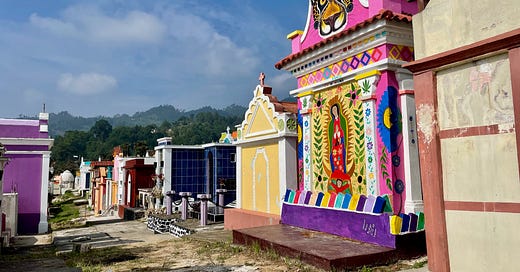



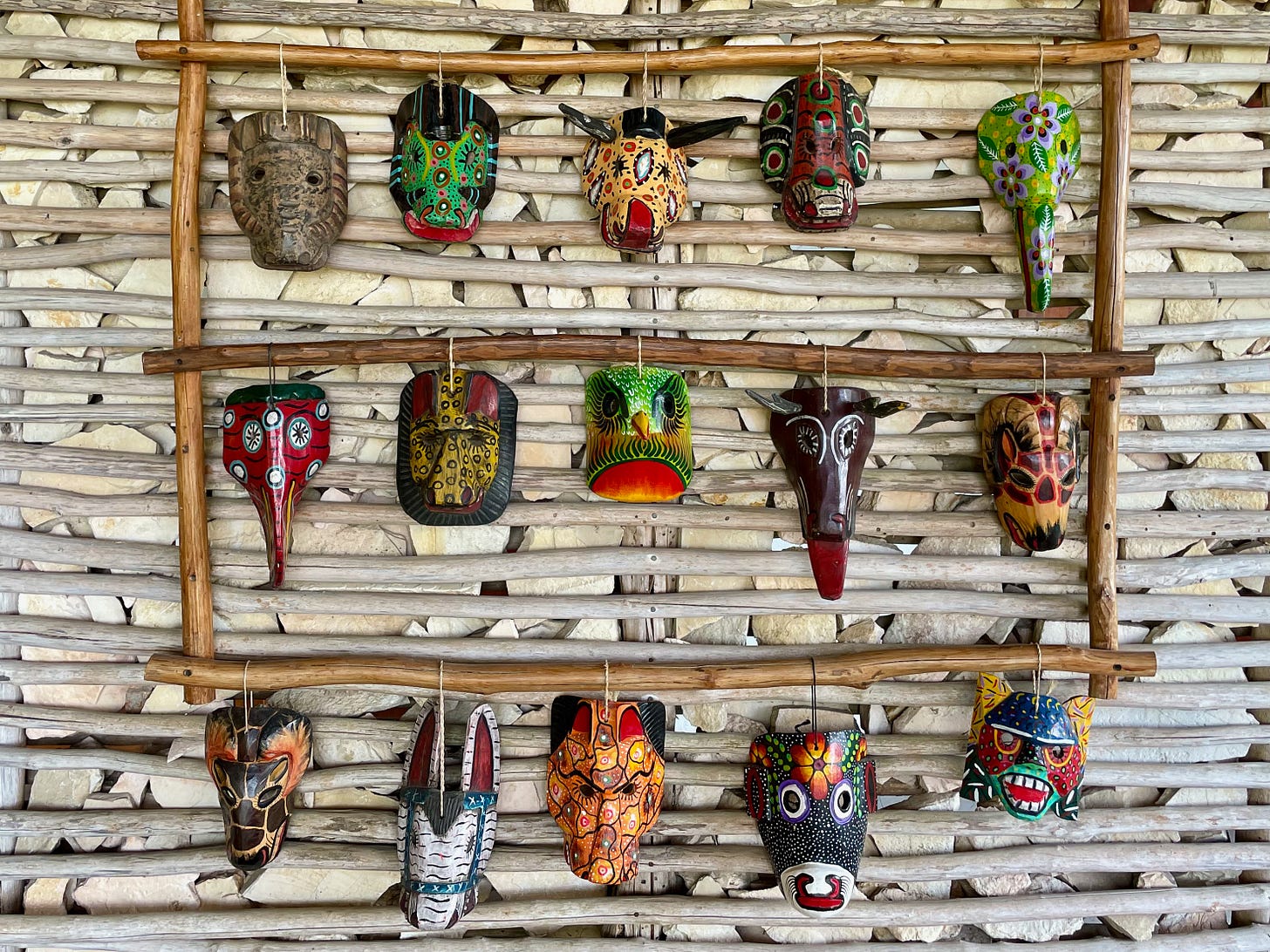
Once again your writing is a balm. My mother-in-law died this morning. She didn't like the pagan elements of Catholicism, but I love them and find the comforting and fascinating.
I read The Long Night of the White Chickens almost 30 years ago. I still think about it.
Can I add a book into the recommendation mix? The Fish that Ate the Whale - the life and times of the Banana King, Sam Zemurray - President of United Fruit